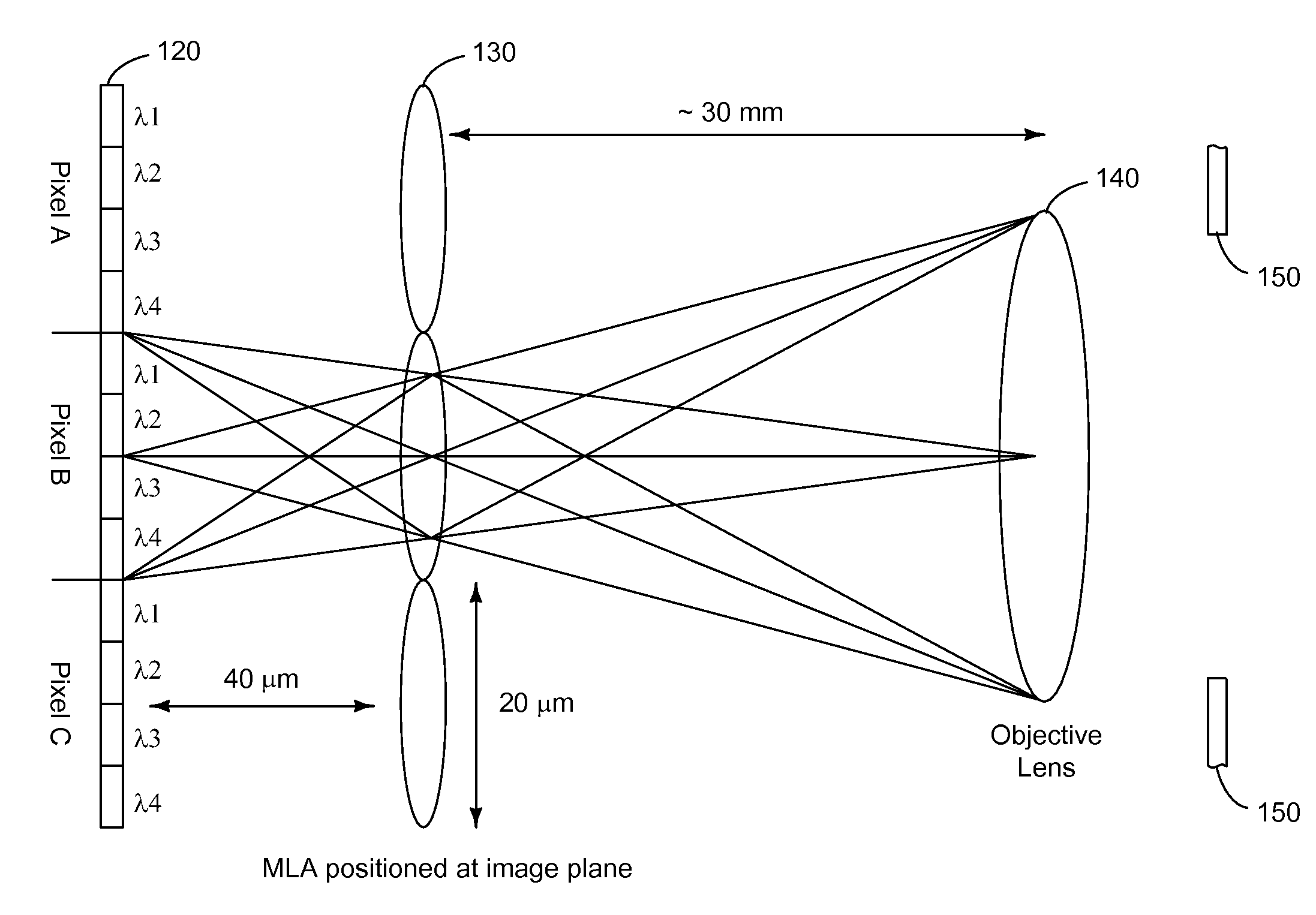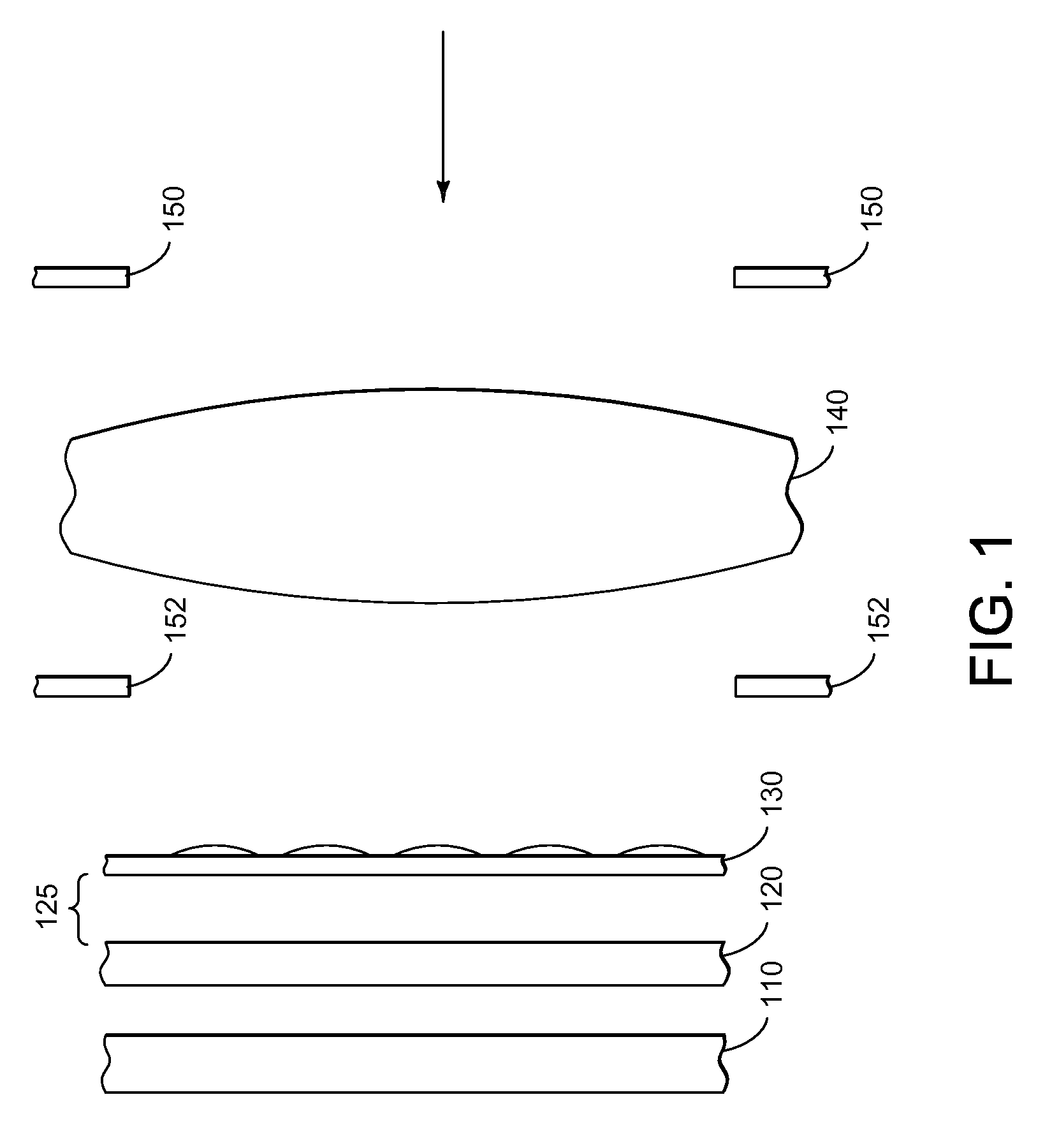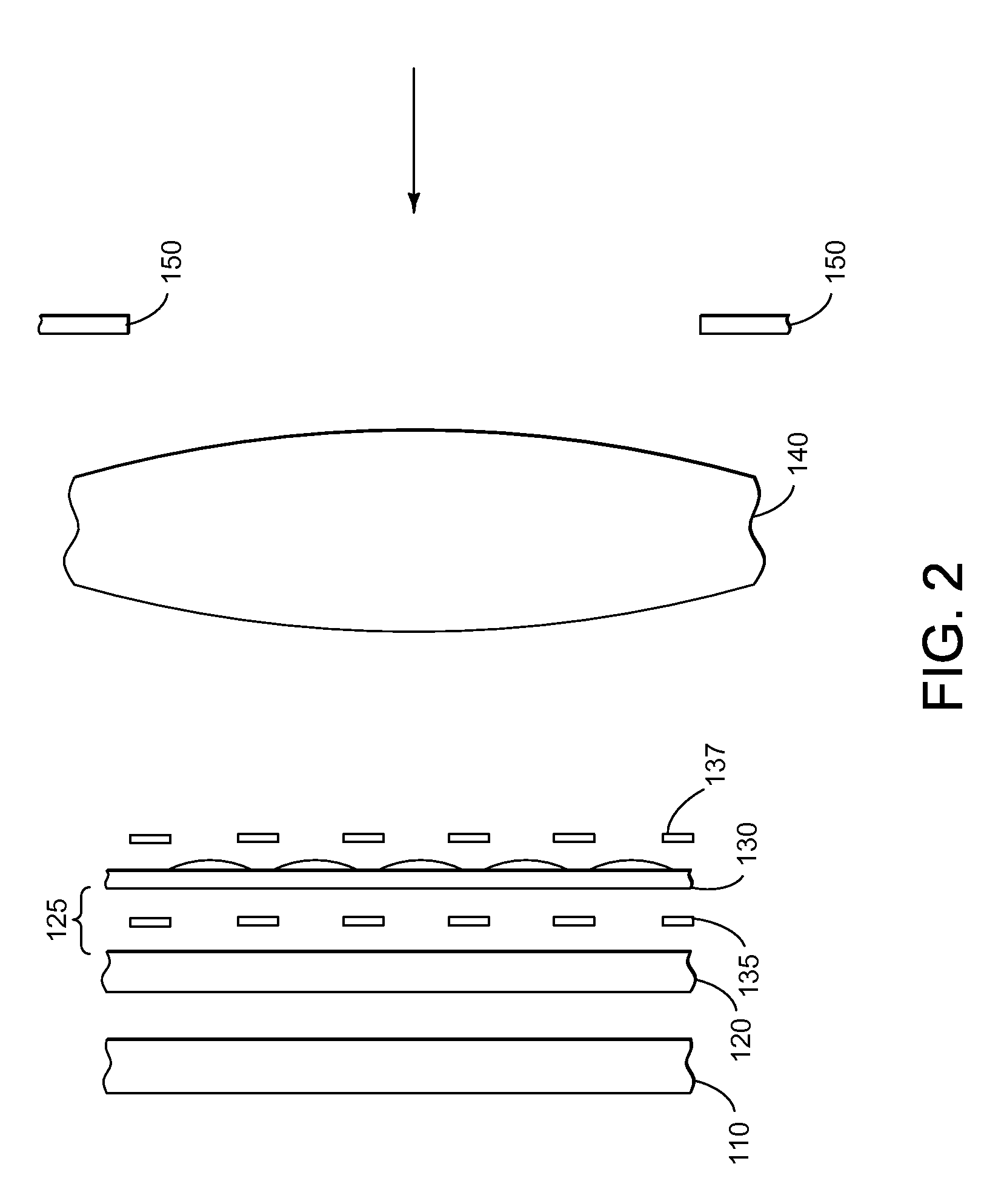Spatially corrected full-cubed hyperspectral imager
a hyperspectral imager and full-cubed technology, applied in the field of spectrometry, can solve the problems of loss of data, inability to reconstruct information lost in mathematical operations performed by image processing, complex and large scanning hyperspectral imagers, etc., and achieve accurate spectral and spatial resolution
- Summary
- Abstract
- Description
- Claims
- Application Information
AI Technical Summary
Benefits of technology
Problems solved by technology
Method used
Image
Examples
Embodiment Construction
[0032]FIG. 1 shows the side view of the layers of the hyperspectral imager according to the present invention. Detector array 110, color filter array 120, and micro-lens array (MLA) 130, each shown separated for clarity, are rigidly attached to each other. MLA 130 is positioned where objective lens 140 forms an image of the object under observation. Detector 110 is placed where the lenses in MLA 130 form an image of the exit pupil of objective lens 140. Color filter array 120 should be placed as close as feasible to detector 110 to ensure minimal spectral crosstalk and maximum efficiency. Optional spacing 125 can be filled with glass, other optically transparent material, vacuum, or air. Each lens of MLA 130 distributes light across a super pixel area of filter array 120 and detector array 110.
[0033]Objective lens 140 is preferably a telecentric lens. The chief ray for each field point of the image formed by a telecentric lens is perpendicular to the image plane. The chief ray is th...
PUM
| Property | Measurement | Unit |
|---|---|---|
| image shape | aaaaa | aaaaa |
| shape | aaaaa | aaaaa |
| hyperspectral imaging | aaaaa | aaaaa |
Abstract
Description
Claims
Application Information
 Login to View More
Login to View More - R&D
- Intellectual Property
- Life Sciences
- Materials
- Tech Scout
- Unparalleled Data Quality
- Higher Quality Content
- 60% Fewer Hallucinations
Browse by: Latest US Patents, China's latest patents, Technical Efficacy Thesaurus, Application Domain, Technology Topic, Popular Technical Reports.
© 2025 PatSnap. All rights reserved.Legal|Privacy policy|Modern Slavery Act Transparency Statement|Sitemap|About US| Contact US: help@patsnap.com



